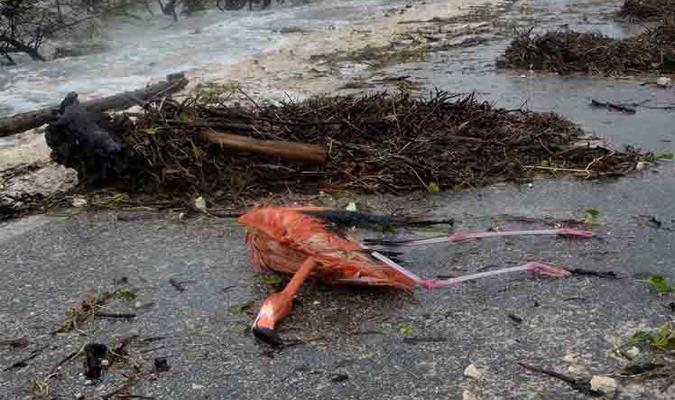
Experts and technicians from the Ministry of Science, Technology and Environment (CITMA) in Camagüey conducted a preliminary assessment of the environmental impacts caused by Hurricane Irma in the north and south coastal areas of the territory.
In the province of greater territorial extension of Cuba, with more coasts, with 25 percent of the beaches of the whole archipelago -, an intense work is carried out to be able to know the degree of total affectations to the environment caused by Irma.
Lisbet Font Vila, head of the CITMA Environment Unit in the region, told reporters that because of coastal flooding, La Boca beach at the tourist resort of Santa Lucia, on the north coast, and Florida Beach on the southern coast, suffered the greatest damages in the flora, the fauna, the soils and the relief.
She further clarified that the most damaged natural component of agroecosystems in the whole territory were soils with an estimated loss of around 10,110 tons in the entire region of Camagüey as a consequence of erosion caused by the effects of the meteorological event.
The loss of sand from the dune, the increase of escarpments and rocks in the beach fronts, and the fall of objects built on the sand, were results of Irma’s passage through the resort of Santa Lucia, where the sector most affected was in La Boca.
In that coastal area, one of the most coveted within the province marine ecosystem, the movement of rocks, blocks of Thalassia, a species of alga, and considerable volumes of sand towards its access road, occurred. More than 60 percent of this was impassable, said Dr. Font Vila.
While on Florida beach, although there was sand-mud sediment accumulated on the coastline, no evidence of chemical or hydrocarbon contamination is observed, and suspended organic matter is maintained by bottom removal and runoff from land.
The flora of Camagüey also felt the impacts of the meteor, between natural forests and plantations, mostly of the municipalities of Sierra de Cubitas and Esmeralda, where they affected about 238 thousand hectares, of which a great part are usable and can be recovered. (Taken from Cuban News Agency)


